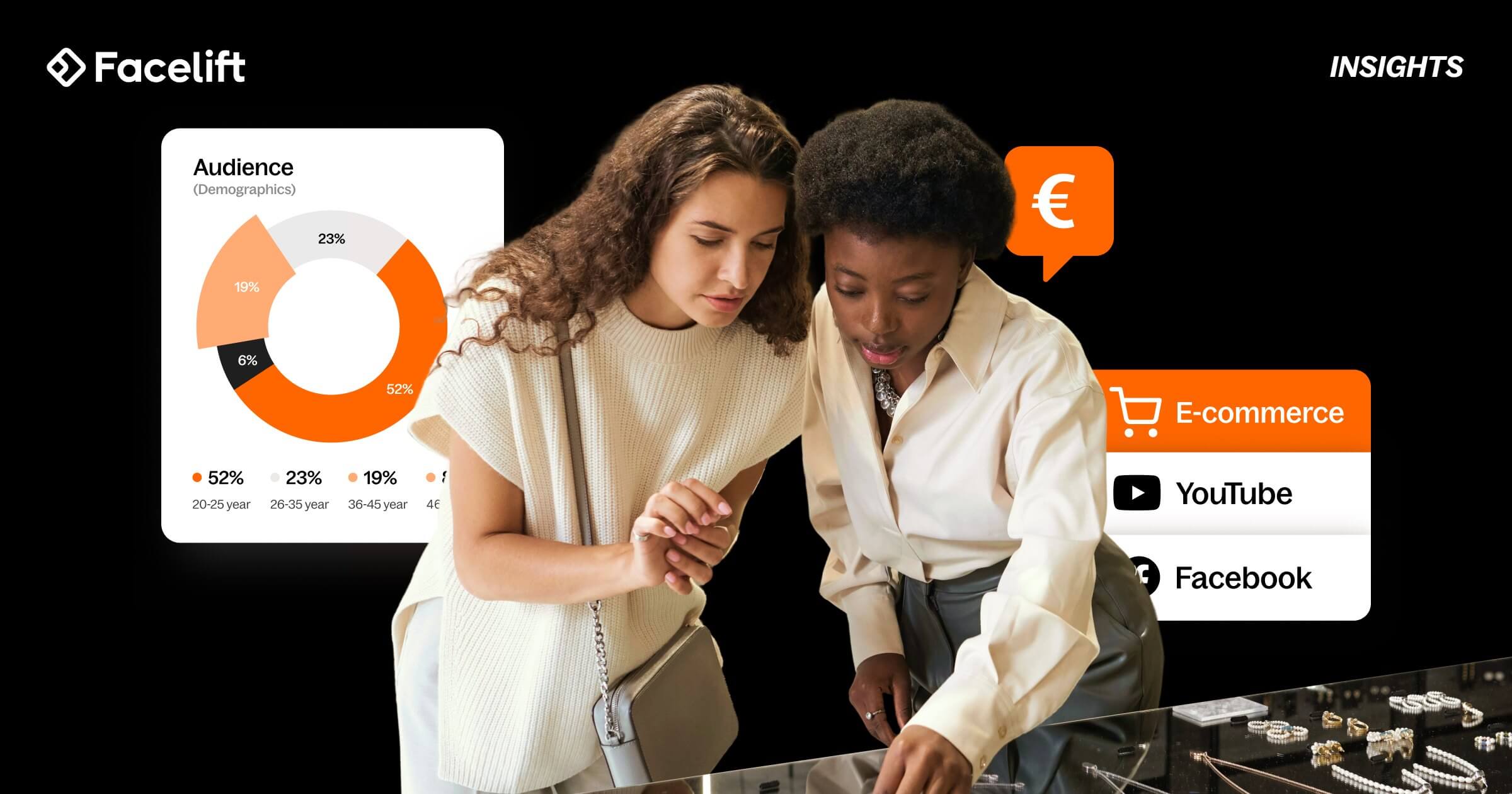Where there's a demand, there is a supply not far behind it.
Social media has made it easier than ever for companies to reach out to potential customers almost anywhere in the world. eCommerce has made accessing products or services fast and easy. Between these two massive paradigm shifts sits the ripest market humanity has ever known. 
Traditionally, social media marketing efforts have been highly targeted towards the world's younger adults: the millennial generation and generation Z.
Millennials led the development and explosion of social media, and generation Z was born into it, never knowing a world without near total digital connectivity. As they have both come to adulthood, they brought with them buying power and influence on an unprecedented scale.
But not everyone always wins with this audience
Under 45s own less, spend less, want less, and care less about certain types of products than their parents and grandparents did at the same age.
Why take a luxury cruise to Norway when you can backpack through the mountains and sleep on strangers' couches? Once it may have been about affordability, but even with money, people choose not to spend.
Premium brands that have billed themselves as the luxury suppliers of the upper echelons of society are not having as easy a time generating interest among these younger demographics. Instead, they are continuing to focus their efforts on a generation with deeper pockets and a differing worldview.
An older, more conservative generation that owns more, spends more, and wants more.
And one that doesn't use social media quite the same way.
With that in mind, how can B2C companies selling premium, exclusive luxury products with hefty price tags that invoke a certain level of "traditional class" connect on social media with those willing and able to indulge?

What kind of products does this include?
When we say "exclusive" products, we're not simply referring to designer clothing. We're talking about large purchases with long sales funnels, numerous touch points, and upon which buyers may deliberate for months or more before converting. These can include:
- Real estate
- High-end jewelry and designer accessories
- Luxury vacation packages and cruises
- Fancy cars and other prestige vehicles including boats or private planes
- Investment opportunities and wealth management
- Event planning and catering
- Much more
While these items are by no means exclusive to an older, wealthier customer base, it makes sense that companies that offer such things follow the money, and there is certainly an upward trend in favor of seniority. In the United States, over 50s hold over 70% of the country's wealth, and according to this, companies are not catering to them as much as they should.
Building a "premium" buyer persona
As always, it’s tough to sell products – especially "high-end" products – without a clearly identified target audience. In order to identify these people, we need to determine the following:

- Who has the financial capacity to purchase your products?
- Which desires does your product fill in their lives?
- What are their motivations for being on social media?
- What does their social media activity look like, and which platforms do they frequent the most?
Who can afford your product?
It goes without saying that the price of a product is going to play a huge role in who its buyers are likely to be. Teenagers aren't buying condos.
First, let's establish that premium, high-end products do not strictly correlate to an older buyer demographic, and an older buyer demographic does not necessarily mean deeper pockets.
However, in developed countries, both socioeconomic and cultural factors have led to a decline in both individual purchasing power among younger generations, as well as interest in wielding it, so for much of this argument, the focus will be on an older set of social media users with the means to purchase exclusive products.
We'll assume that an elder crowd has both more wealth at its disposal, and a greater willingness to use it. This group is more likely to have considerable savings, more established careers, invest, and own other assets such as property.
What motivates your buyers?
Nobody buys a Ferrari because they need transportation.
They buy them because it's cool. It's a status symbol and is representative of the way they wish to be seen. It promotes the idea that they are successful individuals, perhaps implying that they worked hard and are now reaping the fruits of their labors.
Simply by merit of being luxury items, products such as fancy sports cars, private jets, and yachts generate demand that simply screams that their owners are winning the game of life.
Look at the popularity of designer fashion labels and the obsession with owning the latest and greatest. This can be seen with items such as iPhones and the buying craze we see with every new release, even when the upgrades over the previous year's edition are barely tangible, and the price tag gets bigger and bigger anyway.
Buyers are also motivated by quality, or at least the perception of it. This perceived value also dictates our supposed satisfaction with a purchase.
What is your target audience doing on social media?
The 50+ generations are not known as the progenitors and drivers behind social media's explosion and have not historically been the chief user demographic, but even still, the user base certainly isn't small.
According to a study by the Pew Research Center, Facebook and YouTube are head and shoulders above the next most popular platforms among 50+ audiences, which include Pinterest, Instagram, and LinkedIn. In fact, of those surveyed, 73% of 50-64-year-olds were active on Facebook. This study is based on data from the United States, which remains the "Western" world's largest consumer of social media, only behind China globally, which almost exclusively uses its own unique platforms (WeChat, Sina Weibo, Youku/Tuodo, etc.), and India.
While Facebook has seen a decline in use among younger generations in North America and Europe, it is still the largest and remains a primary arena for brands selling to a more mature audience.
How can we reach these exclusive buyers?
Because exclusive products and services often rely on larger sales funnels, social media campaigns for these products should anticipate more and varied touchpoints.
One way to foster eventual conversions is to maintain the mystique. Instead of necessarily pushing the product directly, highlight it as part of a "better" lifestyle. Rather than ads, try using "mood" photos that showcase your products in a glamorous or functional way.
Older audiences are also likely to react to TV-commercial-style ads. Create high-quality videos that suit this style and post them on your pages!
Automobile companies have traditionally done well with video imagery in TV ads, featuring dark shades, sleek lines, and a certain simplicity that conveys class and sex appeal.
Consider the amount of time your target audience spends on social media
Older social media users are less glued to their devices than their children are. While many may still use social media daily, the reduced screen time means that more attention needs to be paid to creating top-quality content with a greater chance of being seen as "top content" by social media algorithms.
Your analytics data will show the days and times at which your audiences are at their most active. Plan your campaign to take advantage of these times for maximum reach.
Your audiences are still willing to read
While the social media world has been moving increasingly towards visual content, particularly video, text is not yet dead. Web articles, blogs, press releases, and other longer-form content still stand a chance of performing well among these demographics.
People preparing to make large purchases are willing to read more, study longer, and collect all the information they can before making a decision. These are not generally impulse buyers and shouldn't be treated this way.
These buyers should be guided, not pushed.
Take advantage of nostalgia
Try using imagery that invokes positive memories and harkens back to your buyers' younger years. Remind them that they've made it. Try to convince your audience that they're ready to stop dreaming and start living the experiences they wished they could have had before.
Taking advantage of nostalgia is an extremely powerful approach. If you have them, try sharing pictures from your company's past and highlight your legacy. Focus on storytelling and try to be relatable.
While younger audiences are often best approached through FOMO (fear of missing out), this approach may not work as well on a more mature, conservative audience, or with the sale of certain items, so instead of looking forward with this group, take some time to look back.
Don't ignore the younger generations
Gen Z still makes great followers and evangelists. As a designer label, your name is everything, and even if your younger followers are not currently likely to convert, they are part of building and maintaining the legend.

They are also more likely to engage by liking and sharing lifestyle content. This engagement is free publicity capable of reaching an extremely wide audience and is absolutely not to be overlooked.
Social media campaigns that target audiences in this way can be run alongside more direct campaigns that target their elders. Between a combination of content that appeals directly to wealthier and/or more mature buyers, as well as content that boosts your company's profile across the board among all ages, you'll be able to establish a stronger position.
This is also one of the best ways to "future-proof" your brand and make sure that it stays competitive and relevant in the future both on social media and off.
Sell the dream
If all of this information could be condensed into one point it would be: don't sell a product, sell a dream.
Make that dream into a tangible presence in the digital lives of your audience. Use language that resonates with your market and the people who care about your product, but that also remains straightforward and concise.
Lastly, recognize that you should not only sell the fulfilment of a dream and lifestyle to your target audience, but you should also remember to foster that dream in the next generation of buyers. 
How Facelift can help
Facelift is the world's first Communication Orchestration platform, designed to help plan and manage all your content and communications - particularly social media - from start to finish.
The analytics tools featured in Facelift are also capable of providing unique and detailed insights into the activities of your followers. Coupled with simple reporting features, the software is able to help social media teams provide detailed information about platform engagement.
Facelift's Analyze tool can help users see the specific posts that are performing well and with which groups they are most successful.
You can also take advantage of Engage, so your community managers can engage with followers, boost customer service quality, agility, and provide teams of any size with further details about follower sentiment and interests, all in one place, thanks to a unified inbox.
Furthermore, community management responsibilities can be delegated to individual team members, and even separate departments as needed. Individual roles can be assigned so that users are able to access only what they need, increasing efficiency across the board.
To learn more about how Facelift can help you identify and better work with your social media followers, read more about the product here.





